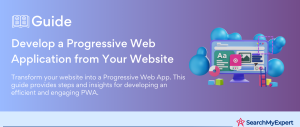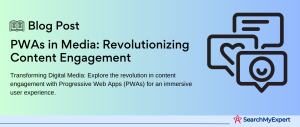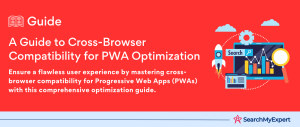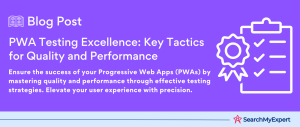Progressive Web App and the Internet of Things (IoT): A Synergistic Future
The Digital Revolution’s New Frontiers: Progressive Web Apps (PWAs) and the Internet of Things (IoT)
In today’s fast-paced digital era, two technologies are at the forefront of innovation: Progressive Web Apps (PWAs) and the Internet of Things (IoT). These technologies are not just buzzwords; they are the building blocks of a connected future.
Progressive Web Apps (PWAs): The Best of Both Worlds
PWAs blend the best features of mobile apps and websites. Imagine accessing your favorite app’s features without the need to download it from an app store. That’s the magic of PWAs! They are responsive, fast, and work offline, offering an app-like experience directly from your web browser.
Internet of Things (IoT): Everything is Connected
The IoT is a network of interconnected devices, from your smartwatch to your refrigerator. These devices communicate and exchange data, turning everyday objects into ‘smart’ gadgets. IoT is about making life more efficient and automated, creating a world where your coffee maker knows when to start brewing as you wake up.
Synergy of PWAs and IoT: A Game Changer
Together, PWAs and IoT are redefining our digital interactions. With PWAs offering seamless app experiences and IoT connecting the devices around us, the combination is potent. This synergy opens up endless possibilities for smarter living and enhanced user experiences.
Understanding Progressive Web Apps (PWAs)
Progressive Web Apps (PWAs): Redefining User Experience in the Digital Age
Progressive Web Apps, or PWAs, represent a groundbreaking approach to web development. They combine the accessibility of a website with the functionality of a native app, offering a user experience that is both versatile and efficient.
Core Principles of PWAs
- Progressive Enhancement:
PWAs work for every user, regardless of browser choice, built with progressive enhancement as a core tenet. - Responsive Design:
They fit any form factor: desktop, mobile, tablet, or forms yet to emerge. - Connectivity Independence: PWAs are accessible offline or on low-quality networks.
- App-like Experience: They feel like a native app on the device, with an immersive user interface.
- Fresh:
PWAs are always up-to-date thanks to the service worker update process. - Safe:
Served via HTTPS to prevent snooping and ensure content hasn’t been tampered with. - Discoverable:
Identified as “applications” thanks to W3C manifests and service worker registration scope. - Re-engageable:
Make re-engagement easy through features like push notifications.
Key Features of PWAs
- Offline Access:
PWAs can be used without an internet connection, providing uninterrupted access to content. - Push Notifications: They can send notifications to users, enhancing engagement.
- Device Hardware Access: PWAs can access device hardware like cameras and microphones for a richer experience.
Benefits of PWAs
For Users
- Fast and Efficient:
Reduced loading times and smooth interactions. - Consistent Experience: Uniform functionality across devices.
- Less Device Storage: No need to download heavy apps.
For Businesses
- Increased Engagement:
Push notifications and offline access keep users coming back. - Lower Development Costs: PWAs are easier and cheaper to develop than native apps.
- Improved User Experience: Fast, responsive, and app-like, PWAs lead to higher user satisfaction.
PWAs are not just a trend; they are the future of web applications. Their ability to provide a high-quality user experience, combined with their cost-effectiveness, makes them an essential component of modern web strategy.
Exploring the Internet of Things (IoT)
The Internet of Things (IoT): Connecting the World One Device at a Time
The Internet of Things (IoT) is a network of physical objects — “things” — embedded with sensors, software, and other technologies for the purpose of connecting and exchanging data with other devices and systems over the internet. The core purpose of IoT is to create a more interconnected and intelligent environment, enhancing efficiency, resource management, and convenience.
Types of IoT Devices and Applications
Smart Homes
- Devices:
Thermostats, smart lights, security cameras. - Application:
Automating home environments for energy saving, security, and convenience.
Healthcare
- Devices:
Wearable health monitors, remote patient monitoring tools. - Application:
Enhancing patient care, monitoring health remotely, and predictive healthcare.
Industrial Automation
- Devices:
Sensors and actuators in manufacturing equipment. - Application:
Optimizing production processes, predictive maintenance, and supply chain management.
Agriculture
- Devices: Agricultural drones, soil and crop monitoring sensors.
- Application: Precision farming, efficient resource usage, and crop health monitoring.
Transportation
- Devices:
Connected vehicles, traffic management systems. - Application: Improving road safety, reducing congestion, and smart parking solutions.
Challenges in IoT Development and Deployment
- Security:
As the number of connected devices increases, so does the risk of cyberattacks. Ensuring secure data transmission and storage is paramount. - Interoperability:
With a vast range of devices and protocols, ensuring seamless communication and integration is a significant challenge. - Data Privacy: The collection of vast amounts of personal data raises concerns over privacy and data usage ethics.
- Scalability:
The ability to efficiently scale as the number of devices grows is crucial for the sustainability of IoT systems. - Energy Consumption:
Powering millions of devices, especially in remote or inaccessible areas, poses a challenge for sustainable energy use.
The IoT is transforming how we interact with the world around us. While the challenges are substantial, the potential for innovation and improvement in quality of life is enormous.
The Convergence of PWAs and IoT
Creating Synergy: When Progressive Web Apps Meet the Internet of Things
The integration of Progressive Web Apps (PWAs) and the Internet of Things (IoT) marks a significant leap in technological synergy. This convergence leverages the best of both worlds: the user-friendly interface of PWAs and the interconnected functionality of IoT devices.
Integration of PWAs and IoT
- Seamless User Experience:
PWAs provide an accessible interface for IoT devices, making it easier for users to interact with a variety of smart devices. - Real-Time Interaction: PWAs enable real-time control and monitoring of IoT devices, enhancing the responsiveness of systems.
- Offline Functionality:
The offline capabilities of PWAs ensure that IoT applications remain functional even in unstable network conditions.
Potential Use Cases
- Remote Device Control: Controlling smart home appliances, security systems, or industrial machinery via a PWA.
- Data Visualization: Displaying data from IoT sensors in an easy-to-understand format on a PWA dashboard.
- Real-Time Monitoring: Tracking health metrics from wearable devices or monitoring environmental parameters in smart farming.
Examples of PWA-Based IoT Solutions
Smart Home Management
- A PWA that allows users to control home appliances, adjust lighting, and monitor energy usage, all from their smartphone or tablet.
Healthcare Monitoring
- A PWA that patients and doctors use to monitor health metrics, such as heart rate or glucose levels, collected from IoT-enabled wearable devices.
Industrial Automation
- A PWA providing factory managers with real-time data visualization and control over IoT-enabled machinery, leading to increased efficiency and reduced downtime.
Agriculture Optimization
- A PWA enabling farmers to monitor soil conditions and crop health using data from IoT sensors, facilitating informed decisions for crop management.
The convergence of PWAs and IoT is unlocking innovative solutions across industries, driving efficiency, and enhancing user experiences. This integration is not just a technological advancement; it’s a step towards a smarter, more connected world.
Development Considerations for PWA-powered IoT Applications
Crafting the Future: Building Efficient and Secure PWA-powered IoT Solutions
Developing PWA-powered IoT applications involves a strategic approach that ensures compatibility, security, and user engagement. Let’s dive into the key factors that shape the development of these innovative solutions.
Key Factors in Development
Device Compatibility
- Wide Range of Devices:
Consider the vast array of IoT devices and ensure the PWA works seamlessly across different platforms and screen sizes. - Performance Optimization:
Focus on optimizing performance for both low-end and high-end devices.
Security Protocols
- Data Encryption:
Implement robust encryption for data transmission between the PWA and IoT devices. - Authentication and Authorization: Use secure authentication methods to ensure user data protection.
- Regular Security Updates:
Continuously update security measures to protect against new threats.
API Integration
- Seamless Integration: Ensure APIs facilitate smooth communication between the PWA and IoT devices.
- Scalability: Design APIs to handle increasing loads as the number of connected devices grows.
Tools and Frameworks
- Development Frameworks: Angular, React, or Vue.js for building the PWA interface.
- IoT Platforms: AWS IoT, Microsoft Azure IoT Suite, or Google Cloud IoT for managing IoT devices and data.
- Service Workers: For offline functionality and background syncing in PWAs.
- Web APIs: For accessing device features like camera, microphone, or location.
User-Centered Design
- Intuitive UI/UX:
Design an interface that is easy to navigate and understand. - Responsive Design:
Ensure a consistent experience across various devices and screen sizes. - Engagement Features:
Incorporate features like push notifications to enhance user engagement. - Accessibility:
Make the application accessible to all users, including those with disabilities.
Developing PWA-powered IoT applications is a complex yet rewarding endeavor. Focusing on these key considerations will lead to the creation of solutions that are not only technologically advanced but also secure, user-friendly, and widely accessible.
Challenges and Opportunities for the Future of PWA-IoT Integrations
Navigating the Road Ahead: Balancing Challenges with Emerging Opportunities
The integration of Progressive Web Apps (PWAs) and the Internet of Things (IoT) holds immense potential, but it’s not without its challenges. As we look to the future, it’s crucial to address these challenges while embracing the opportunities that emerging trends and advancements present.
Challenges and Limitations
Fragmented Browser Support
- Inconsistency Across Browsers: PWAs may not offer the same level of functionality in all web browsers, leading to a fragmented user experience.
- Feature Availability: Some advanced features of PWAs might be limited or unsupported in certain browsers.
Evolving Security Threats
- Vulnerability to Attacks:
As the number of connected devices increases, so does the potential attack surface for cyber threats. - Data Security and Privacy:
Ensuring the security and privacy of data transmitted between IoT devices and PWAs remains a significant concern.
Emerging Trends and Advancements
Enhanced Browser Capabilities
- Unified Standards: Efforts to standardize PWA features across all major browsers to ensure a consistent user experience.
- Advanced Features: Introduction of new capabilities in web browsers to enhance the functionality of PWAs.
IoT Technology Innovations
- Improved Connectivity: Advancements in 5G and beyond for faster and more reliable IoT device connections.
- Edge Computing:
Processing data closer to IoT devices to improve response times and reduce bandwidth usage.
Potential Impact on Society
Personal Productivity
- Smart Living: Enhanced personal efficiency and convenience through integrated home and personal devices.
- Health and Wellness:
Personalized health monitoring and management through wearable IoT devices.
Societal Infrastructure
- Urban Planning:
IoT-powered smart cities with efficient resource management and improved public services. - Environmental Monitoring:
Using IoT for real-time environmental data collection and analysis.
The future of PWA-powered IoT applications is not just a technological journey; it’s a pathway to a more connected, efficient, and informed society. By addressing current challenges and leveraging emerging trends, we can unlock the full potential of these technologies.
Key Takeaways
- Innovative Integration:
PWAs and IoT are revolutionizing how we interact with the digital world, offering seamless, efficient, and interconnected experiences. - User-Centric Solutions:
The focus on user experience and engagement is at the heart of PWA and IoT innovations. - Technological Synergy: The combination of PWAs and IoT devices unlocks new possibilities for smarter and more responsive solutions in various sectors.
- Future-Ready Development:
While challenges like browser fragmentation and security concerns exist, the ongoing advancements in technology promise to overcome these hurdles.
The Path Forward
The union of PWAs and IoT is not just a technological advancement; it’s a paradigm shift in the digital landscape. This partnership is crucial in shaping a future where digital interactions are more intuitive, efficient, and integrated into our daily lives.
Encouraging Further Exploration and Development
- Innovation Call: There is a growing need for developers, businesses, and innovators to delve deeper into creating PWA-powered IoT solutions.
- Addressing Real-World Problems: By harnessing the capabilities of these technologies, we can develop solutions that address pressing societal challenges, from healthcare to environmental sustainability.
- Enhancing Quality of Life:
The ultimate goal is to leverage these technologies to improve various aspects of our lives, making them more connected, convenient, and efficient.
As we stand at the cusp of this digital revolution, the potential of PWA and IoT integration is limitless. It’s an exciting time for developers, businesses, and users alike to embrace these changes and contribute to a more connected and efficient world.
Conclusion
The integration of Progressive Web Apps (PWAs) and the Internet of Things (IoT) stands at the forefront of digital innovation. This convergence is creating user-friendly, efficient, and interconnected solutions across various sectors. While there are challenges such as device compatibility and security, the potential for a positive impact on personal productivity and societal infrastructure is enormous.
Encouraging further exploration and development in this field promises not only technological advancement but also significant improvements in our daily lives. This journey into the realm of PWAs and IoT opens up a world of possibilities, ushering in a new era of digital transformation.
Enhance your user experience with expert Progressive Web App Service Firms.
Further Reading
- Progressive Web App Testing and Quality Assurance
- Overcoming Challenges in Progressive Web App Development
- Progressive Web App for Media and Content Platforms
- Migrating from Native App to Progressive Web App
- Community and Support for Progressive Web App Developers
- Introduction to Progressive Web Apps
Table of Contents
Toggle






